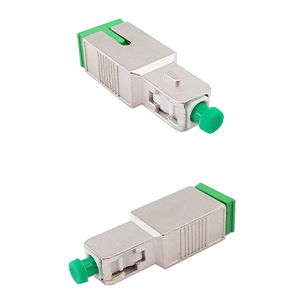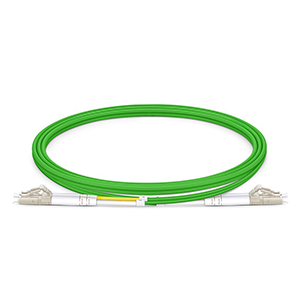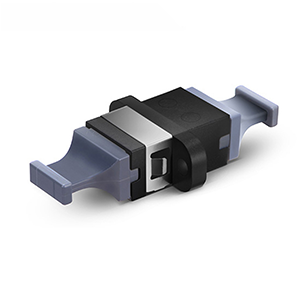AON (active optical network) and PON (passive optical network) are two important network architectures in the field of optical fiber communication. This article will explore how to choose between the two network architectures. We will first briefly review the basic characteristics of AON and PON networks and explain the advantages and disadvantages of the two network architectures.
Next, we will focus on the key factors affecting the choice of AON or PON, including network scale and number of users, bandwidth and transmission performance requirements, initial deployment costs, operation and maintenance management difficulties, and reliability and redundancy requirements. We will analyze the impact of these factors on the choice. Finally, we will propose a systematic selection decision-making process to explain how to make a reasonable choice based on actual needs.
Overview of AON and PON Networks
Basic Characteristics of AON and PON Networks:
AON (Active Optical Network) and PON (Passive Optical Network) are two different fiber access network technologies:
Characteristics of AON Network:
- The network architecture includes active devices, such as optical amplifiers, optical switches, etc.
- The topology is flexible and can be in various forms such as star and ring.
- The transmission bandwidth and distance performance are high, supporting ultra-high-speed access above 10G.
- The network management and service carrying capacity are strong, suitable for large-bandwidth enterprise users.
Characteristics of PON Network:
- The network architecture uses passive optical splitters, without active devices.
- The tree topology is relatively simple, and fiber resources are used efficiently.
- The transmission bandwidth and distance performance are average, but the cost and energy consumption are low.
- Network management is relatively decentralized, suitable for home and small and medium-sized enterprise users.
Comparison of the advantages and disadvantages of AON and PON networks:
Advantages:
- AON network topology is flexible, transmission performance is excellent, and it is suitable for large bandwidth application scenarios.
- PON network architecture is simple, cost-effective, and suitable for home and small and medium-sized enterprise users.
Disadvantages:
- AON network equipment is expensive, and has high requirements for power supply and management.
- PON network scale is limited, and transmission bandwidth and distance performance are inferior to AON.
In general, AON and PON networks have their own advantages and disadvantages and are suitable for different application scenarios. In actual network planning, it is necessary to weigh the advantages and disadvantages of the two technologies according to user needs and deployment environment and choose the most appropriate solution.
How to choose AON or PON
Choosing AON or PON mainly depends on network requirements, budget and maintenance considerations. AON is suitable for high-bandwidth, low-latency scenarios, but the cost is high; PON is suitable for large-scale user access, with low cost and simple maintenance. The appropriate solution should be selected according to actual needs and budget.
- Network scale and number of users:
- For larger networks and user groups, the advantages of AON networks will be more prominent.
- AON can achieve larger-scale optical network coverage and management through active devices.
- For small-scale networks, PON’s simple architecture and low cost are more advantageous.
- Bandwidth and transmission performance requirements:
- If there are higher requirements for high bandwidth and long-distance transmission, AON network is more suitable.
- The bandwidth and transmission performance of PON network are relatively weak, suitable for medium and low bandwidth requirements.
- It is critical to choose matching AON or PON technology according to actual business needs.
- Initial deployment cost:
- The active equipment cost of AON network is usually higher, and the deployment cost is also higher.
- The passive architecture of PON network makes its deployment cost relatively low.
- If cost is the primary consideration, PON may be a more suitable choice.
- Operation and maintenance management difficulty:
- AON network has stronger centralized management and monitoring capabilities, but the management work is also more complicated.
- PON network management is relatively decentralized and simple.
- For users who have clear requirements for network management capabilities and operation and maintenance costs, AON has more advantages.
- Reliability and redundancy requirements:
- AON network can improve reliability through backup optical paths and other means, while PON network has weak redundancy capabilities.
- If there is a higher demand for network reliability and business continuity, AON network is more suitable.
Taking the above factors into consideration, network planners need to weigh different requirements and make the final AON or PON choice. In some demand-balanced scenarios, hybrid deployment can also be achieved by combining the advantages of both technologies.
Decision framework for selecting AON or PON
The decision framework for selecting AON or PON includes evaluating network scale, bandwidth requirements, budget constraints, and maintenance requirements. AON is suitable for high-bandwidth and low-latency applications, but the cost is higher; PON is suitable for large-scale user access and is cost-effective. Consider these factors comprehensively and choose the most suitable network solution.
- Determine business requirements:
- Clearly define the key requirements of the network, such as the number of users, business types, and bandwidth requirements.
- Differentiate priorities and special requirements according to different application scenarios (such as home, enterprise, etc.).
- Evaluate technical indicators:
- Compare the technical indicators of AON and PON networks in terms of bandwidth, transmission distance, interface flexibility, etc.
- Evaluate the differences and adaptability of the two solutions in technical performance according to the needs.
- Analyze economic factors:
- Compare AON and PON in economic indicators such as initial deployment cost and operation and maintenance management cost.
- Analyze the total cost of ownership (TCO) based on factors such as equipment and construction costs and operating expenses.
- Evaluate operational capabilities:
- Evaluate the complexity of the two solutions in network management, maintenance, fault diagnosis and other operational work.
- Choose a suitable management model based on your own network operation capabilities.
- Weigh the overall benefits:
- Comprehensively consider business needs, technical indicators, economic factors, and operational capabilities.
- Weigh the advantages and disadvantages of the two solutions in terms of performance, cost, reliability, etc., and make the best choice.
- Develop an implementation plan:
- Develop a detailed deployment plan and operation and maintenance strategy based on the selected AON or PON solution.
- Ensure that the selected solution can give full play to its advantages, meet user needs and improve overall network efficiency.
In the actual decision-making process, it is necessary to weigh the advantages and disadvantages of AON and PON technologies based on the specific application scenarios of the network, user needs, deployment environment and other factors, and make the most reasonable choice. Through this systematic decision-making framework, it is possible to ensure that the best optical access network solution is selected.
Summary
In the selection of optical fiber communication network architecture, it is necessary to fully consider many factors. Our company has long focused on the research and development and application of AON and PON technologies and has rich practical experience. We provide a variety of high-performance AON and PON equipment, including optical line terminals, optical network units, Ethernet switches, etc., to meet the deployment needs of different application scenarios.
Our products use industry-leading technologies and have achieved excellent levels in reliability, energy efficiency, and management functions. At the same time, our team of engineers will provide you with professional demand analysis and solution planning services to ensure that the selected network architecture can meet your actual needs to the greatest extent. Contact us now to learn more. We will do our best to provide you with the best products and solutions.
AON network and PON network FAQ
AON uses active components like switches to manage data traffic, providing higher flexibility and control. PON relies on passive splitters, making it more cost-effective and easier to deploy, but with less granular control over data traffic.
AON is better suited for environments that require high bandwidth, low latency, and the ability to manage and direct traffic actively, such as enterprise networks, data centers, or areas with high user density.
PON networks are generally more cost-effective, simpler to deploy, and require less maintenance, making them ideal for residential broadband services, small businesses, and large-scale deployments in areas with lower traffic demands.
PON networks typically have lower initial deployment and ongoing maintenance costs due to the absence of active components in the distribution network. AON networks, while more expensive, offer greater flexibility and may justify the cost in high-demand environments.
AON networks are generally more scalable due to their use of active components, which can be adjusted and expanded more easily. PON networks are scalable to a degree, but expanding bandwidth may require more complex infrastructure changes.
AON networks tend to offer better performance in terms of lower latency and higher dedicated bandwidth per user, making them ideal for applications requiring fast and reliable data transfer. PON networks share bandwidth among users, which may lead to variable performance based on network load.
AON networks offer more advanced management capabilities, including dynamic bandwidth allocation and traffic prioritization. PON networks have more limited management options due to the passive nature of the network components.
PON networks generally require less maintenance due to the use of passive components, which are less prone to failure. AON networks, with their active components, may require more frequent maintenance and monitoring but can offer higher reliability in managed environments.
AON networks, with their flexibility and active management capabilities, are typically better suited for adapting to future technological advancements and increasing bandwidth demands. PON networks may require more significant upgrades to support new technologies.
Consider your specific network needs, such as bandwidth requirements, latency sensitivity, scalability, budget constraints, and maintenance capabilities. For cost-effectiveness and simplicity, PON may be the best choice. For higher performance and network control, AON might be more suitable.




